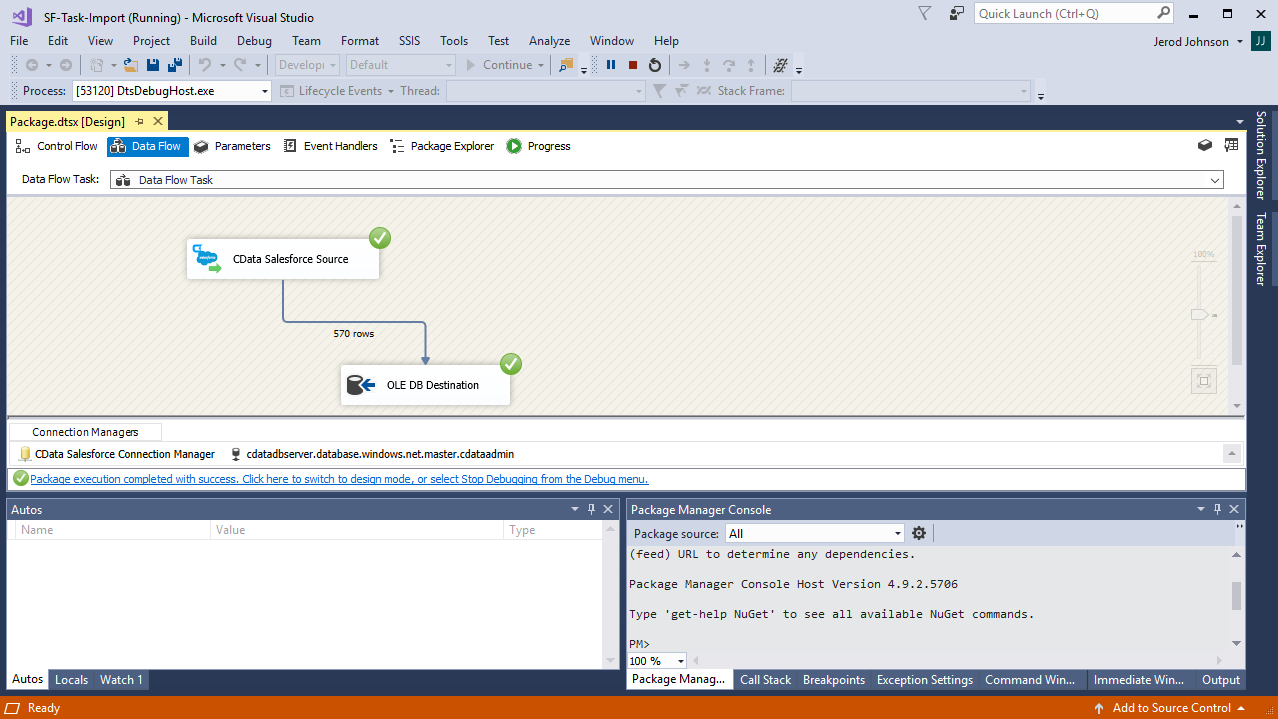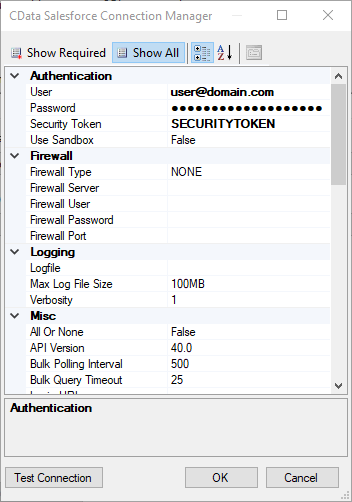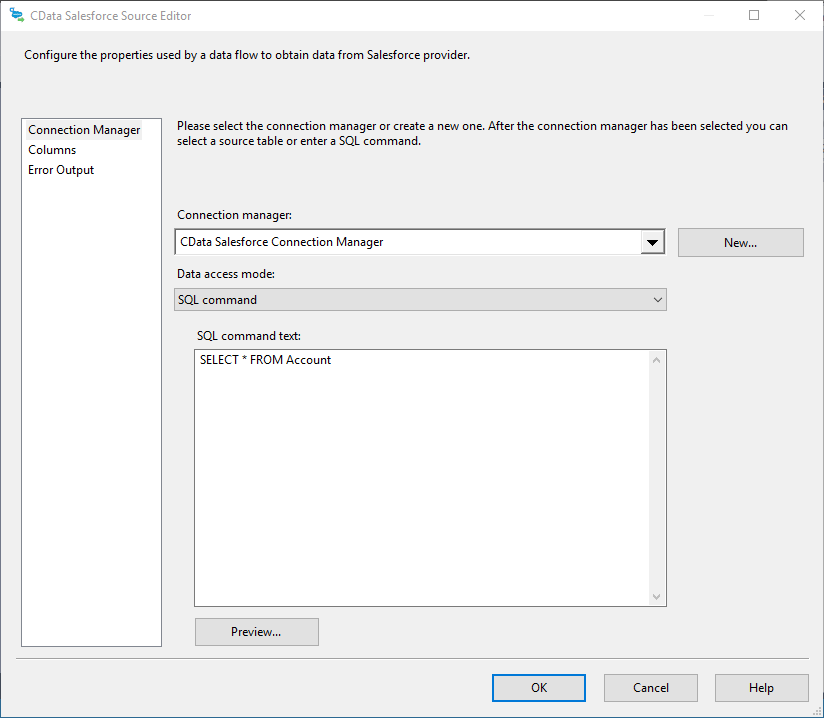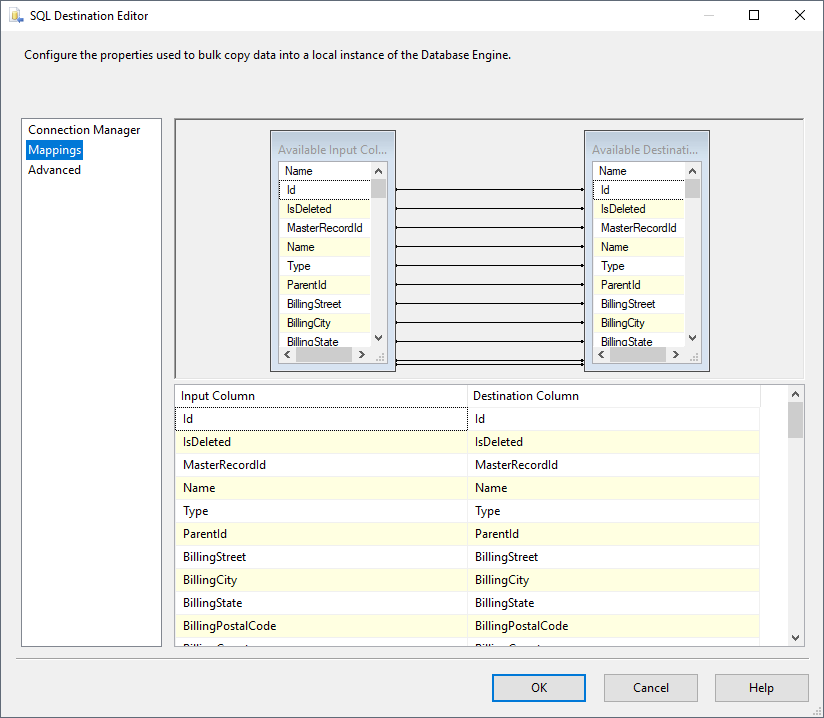Discover how a bimodal integration strategy can address the major data management challenges facing your organization today.
Get the Report →How to Import CSV Data into SQL Server using SSIS
Easily back up CSV data to SQL Server using the SSIS components for CSV.
Using SQL Server as a backup for critical business data provides an essential safety net against loss. Backing up data to SQL Server enables business users to more easily connect that data with features like reporting, analytics, and more.
This example demonstrates how to use the CData SSIS Tasks for CSV inside of a SQL Server SSIS workflow to transfer CSV data into a Microsoft SQL Server database.
Add the Components
To get started, add a new CSV source and SQL Server ADO.NET destination to a new data flow task.
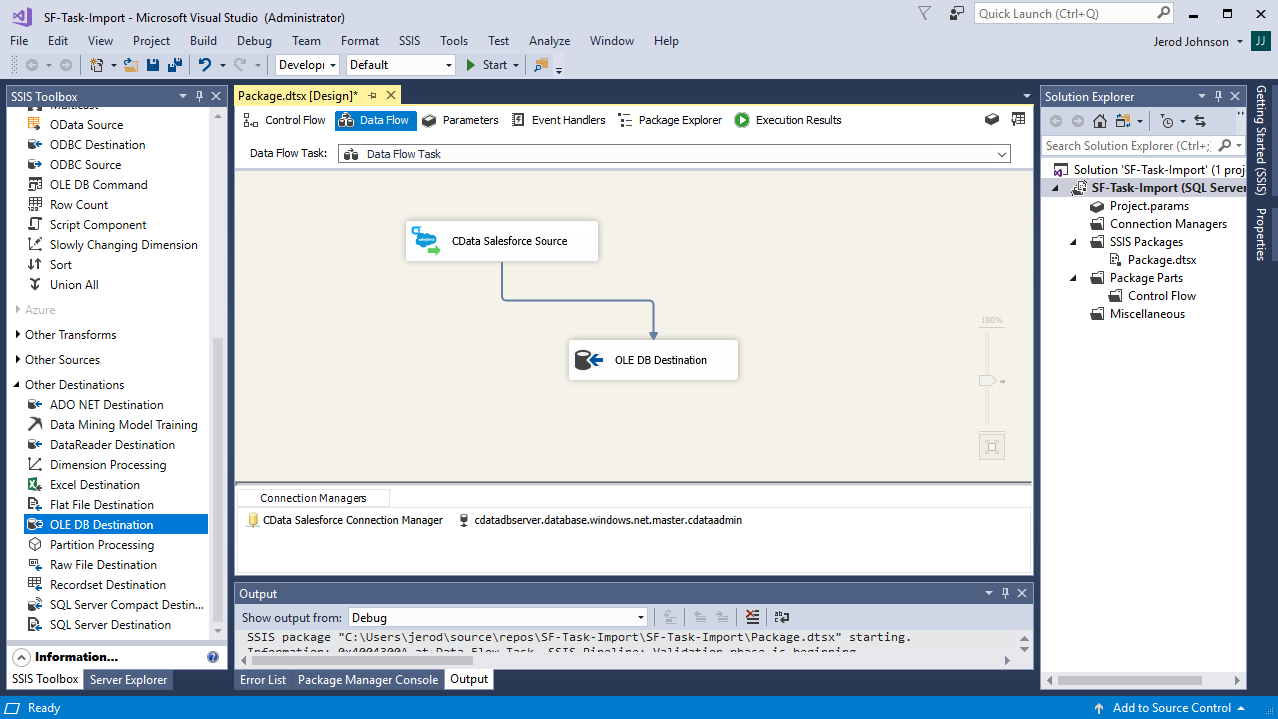
Create a New Connection Manager
Follow the steps below to save CSV connection properties in a connection manager.
- In the Connection Manager window, right-click and then click New Connection. The Add SSIS Connection Manager dialog is displayed.
- In the Connection Manager type menu, select CSV. The CData CSV Connection Manager is displayed.
- Configure connection properties.
The DataSource property must be set to a valid local folder name.
Also, specify the IncludeFiles property to work with text files having extensions that differ from .csv, .tab, or .txt. Specify multiple file extensions in a comma-separated list. You can also set Extended Properties compatible with the Microsoft Jet OLE DB 4.0 driver. Alternatively, you can provide the format of text files in a Schema.ini file.
Set UseRowNumbers to true if you are deleting or updating in CSV. This will create a new column with the name RowNumber which will be used as key for that table.
![Configuring a connection (Salesforce is shown).]()
Configure the CSV Source
Follow the steps below to specify the query to be used to extract CSV data.
- Double-click the CSV source to open the source component editor.
- In the Connection Manager menu, select the connection manager previously created.
- Specify the query to use for the data extraction. For example:
SELECT City, SUM(TotalDue) FROM Customer GROUP BY City![The SQL query to retrieve records. (Salesforce is shown.)]()
- Close the CSV Source control and connect it to the ADO.NET Destination.
Configure the SQL Server Destination
Follow the steps below to specify the SQL server table to load the CSV data into.
- Open the ADO.NET Destination and add a New Connection. Enter your server and database information here.
- In the Data access mode menu, select "table or view".
- In the Table Or View menu, select the table or view to populate.
- Configure any properties you wish to on the Mappings screen.
![The mappings from the SSIS source component to SQL Server. (Salesforce is shown.)]()
Run the Project
You can now run the project. After the SSIS Task has finished executing, your database will be populated with CSV data.
